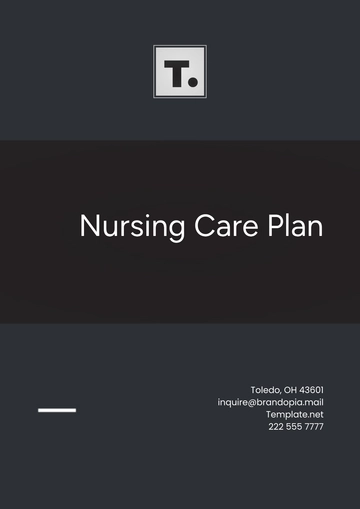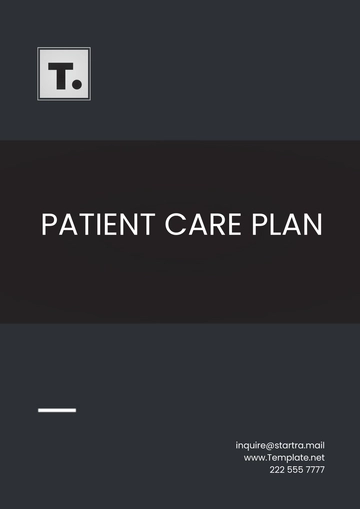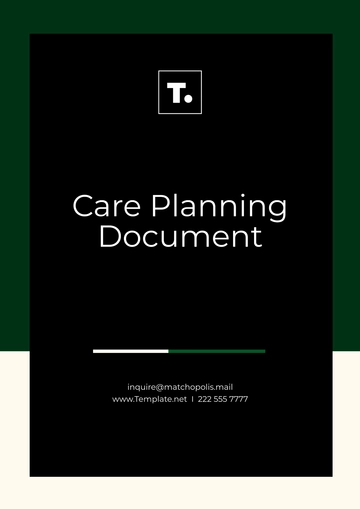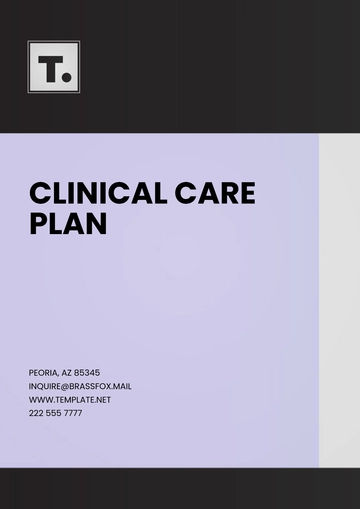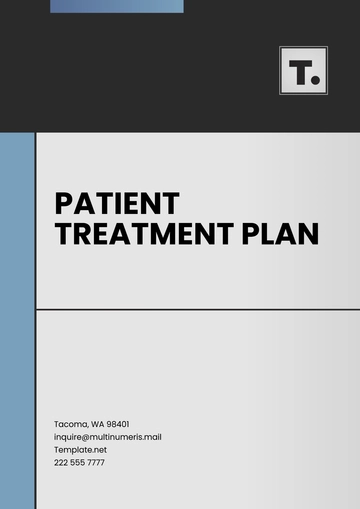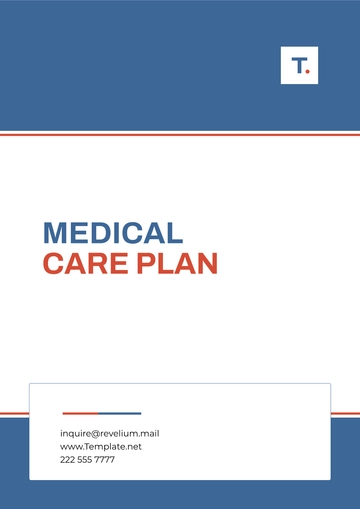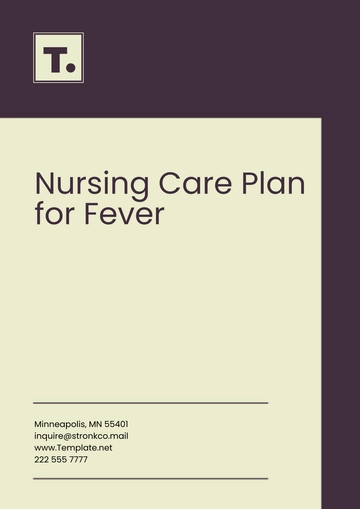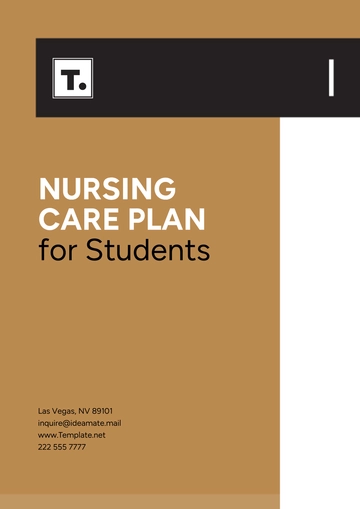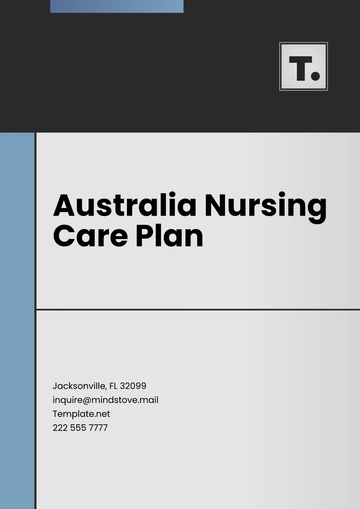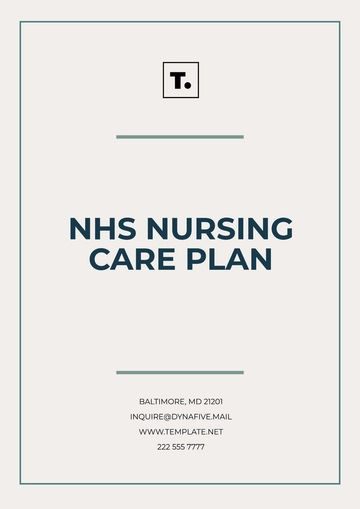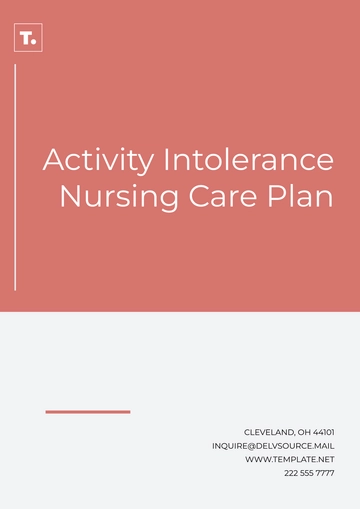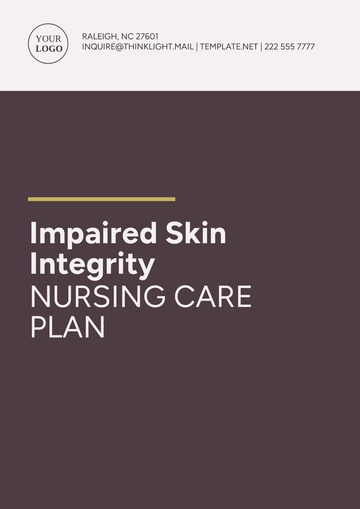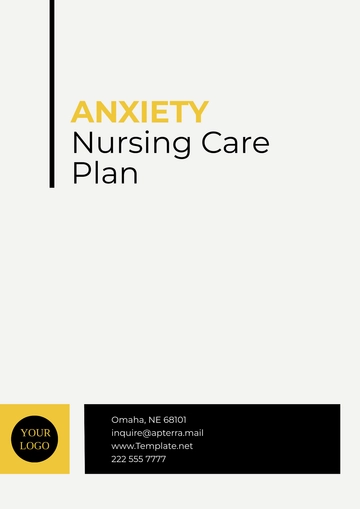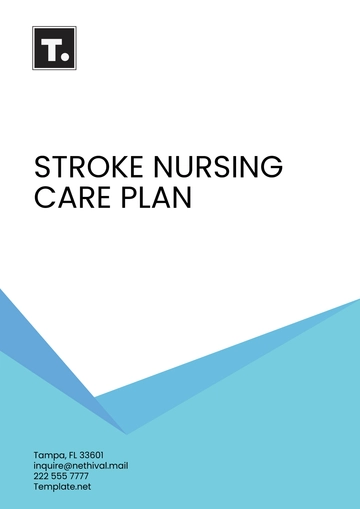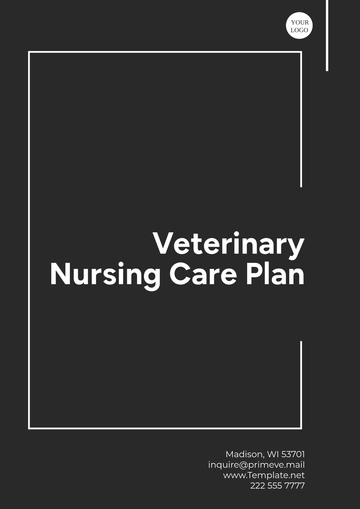Free Anesthesia Care Plan
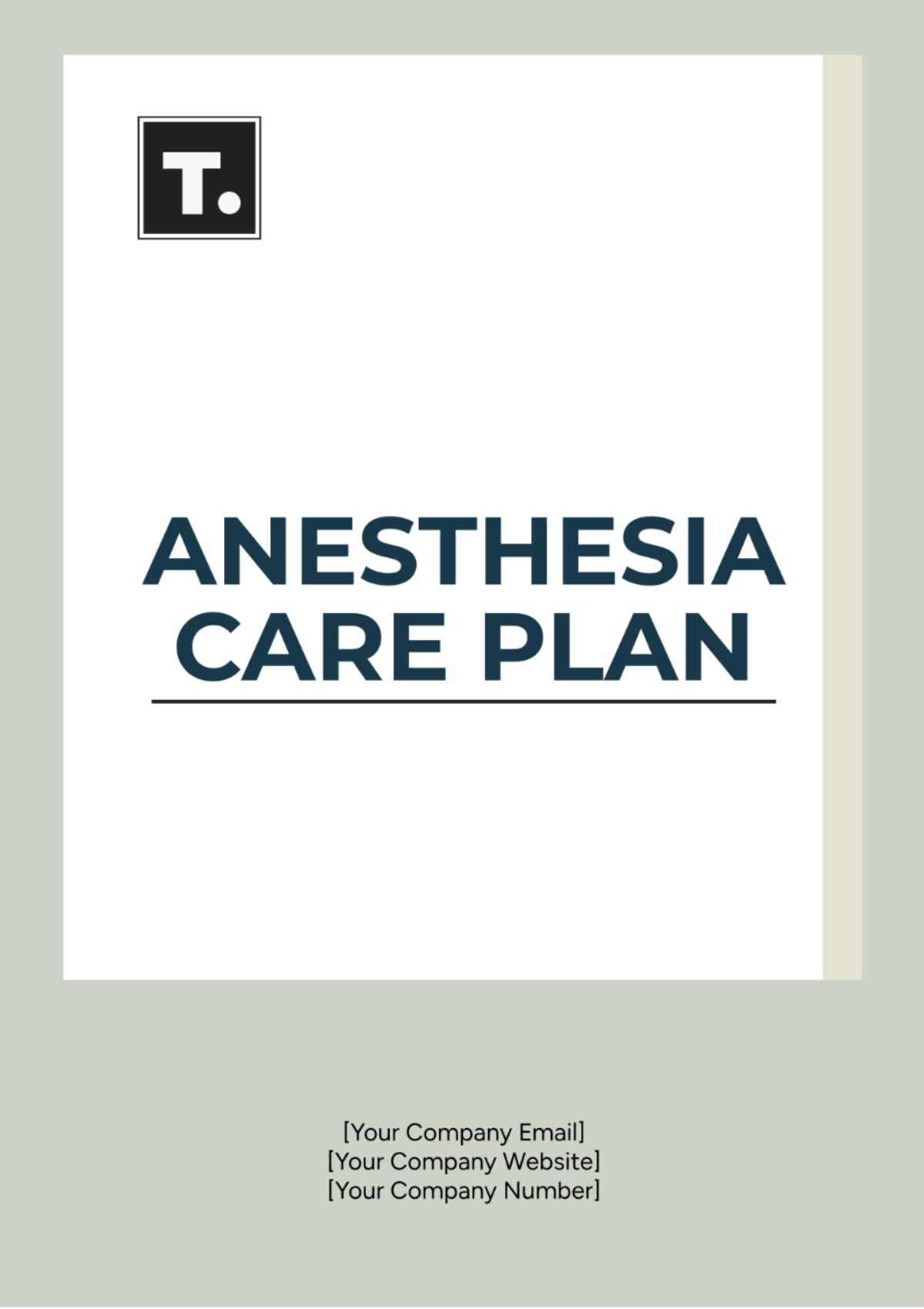
Written by: [Your Name]
I. Introduction
The Pre-operative Anesthesia Care Plan outlines the anesthesia procedures and considerations before surgery to ensure optimal patient safety and comfort during the perioperative period.
II. Patient Information
A. Demographics
Demographic | Details |
|---|---|
Name | [Patient's Name] |
Age | [Patient's Age] |
Gender | [Patient's Gender] |
Medical Record Number | [MRN] |
Date of Admission | [Date] |
B. Medical History
Past medical history: Hypertension, Diabetes
Current medications: Metformin 1000mg once daily, Lisinopril 10mg once daily
Allergies: None
III. Anesthesia Plan
A. Anesthetic Technique
Type of anesthesia: General
Additional techniques: Peripheral nerve block
B. Anesthetic Agents
Induction agents: Propofol 200mg
Maintenance agents: Sevoflurane 1-2%
Adjunct medications: Ondansetron 4mg IV
IV. Pre-operative Assessment
A. Physical Examination
Airway assessment: Mallampati score II, neck mobility normal
Cardiovascular assessment: Regular heart rate, palpable peripheral pulses
Respiratory assessment: Clear lung sounds, respiratory rate 16 breaths/min
B. Laboratory Investigations
Blood work: Normal complete blood count, electrolytes within normal range
Imaging studies: Normal chest X-ray, unremarkable ECG
C. Patient Preparation
Parameter | Target | Actual |
|---|---|---|
NPO Status | At least 8 hours | Met |
Medication Adjustment | Hold Metformin 24 hours pre-op | Adjusted |
IV Line Insertion | Established | Done |
V. Informed Consent
Discussion of risks, benefits, and alternatives of anesthesia
Documented patient consent for anesthesia administration
VI. Communication Plan
Communication with surgical team regarding patient status and concerns
Handoff communication between anesthesia providers during shift changes
VII. Risk Management
Identifiable Risks: Risk of bleeding, risk of infection
Mitigation Strategies: Close monitoring of vital signs, prophylactic antibiotics
Emergency Contact: Emergency Department: (123) 456-7890
VIII. Emergency Protocols
Management of intraoperative emergencies: Malignant hyperthermia protocol in place
Activation of rapid response team or code blue procedures
IX. Follow-up Plan
Post-operative pain management: Intravenous morphine PCA
Post-anesthesia care unit (PACU) handoff: Report provided to PACU nurses
X. Signatures

Anesthesia provider

Surgeon

Patient or legal representative
- 100% Customizable, free editor
- Access 1 Million+ Templates, photo’s & graphics
- Download or share as a template
- Click and replace photos, graphics, text, backgrounds
- Resize, crop, AI write & more
- Access advanced editor
Discover the ultimate Anesthesia Care Plan Template at Template.net. Crafted by experts, this editable and customizable template ensures precise pre-operative planning. Seamlessly modify it in our Ai Editor Tool for tailored care plans. Elevate patient safety and efficiency with this comprehensive resource, available exclusively at Template.net.
You may also like
- Finance Plan
- Construction Plan
- Sales Plan
- Development Plan
- Career Plan
- Budget Plan
- HR Plan
- Education Plan
- Transition Plan
- Work Plan
- Training Plan
- Communication Plan
- Operation Plan
- Health And Safety Plan
- Strategy Plan
- Professional Development Plan
- Advertising Plan
- Risk Management Plan
- Restaurant Plan
- School Plan
- Nursing Home Patient Care Plan
- Nursing Care Plan
- Plan Event
- Startup Plan
- Social Media Plan
- Staffing Plan
- Annual Plan
- Content Plan
- Payment Plan
- Implementation Plan
- Hotel Plan
- Workout Plan
- Accounting Plan
- Campaign Plan
- Essay Plan
- 30 60 90 Day Plan
- Research Plan
- Recruitment Plan
- 90 Day Plan
- Quarterly Plan
- Emergency Plan
- 5 Year Plan
- Gym Plan
- Personal Plan
- IT and Software Plan
- Treatment Plan
- Real Estate Plan
- Law Firm Plan
- Healthcare Plan
- Improvement Plan
- Media Plan
- 5 Year Business Plan
- Learning Plan
- Marketing Campaign Plan
- Travel Agency Plan
- Cleaning Services Plan
- Interior Design Plan
- Performance Plan
- PR Plan
- Birth Plan
- Life Plan
- SEO Plan
- Disaster Recovery Plan
- Continuity Plan
- Launch Plan
- Legal Plan
- Behavior Plan
- Performance Improvement Plan
- Salon Plan
- Security Plan
- Security Management Plan
- Employee Development Plan
- Quality Plan
- Service Improvement Plan
- Growth Plan
- Incident Response Plan
- Basketball Plan
- Emergency Action Plan
- Product Launch Plan
- Spa Plan
- Employee Training Plan
- Data Analysis Plan
- Employee Action Plan
- Territory Plan
- Audit Plan
- Classroom Plan
- Activity Plan
- Parenting Plan
- Care Plan
- Project Execution Plan
- Exercise Plan
- Internship Plan
- Software Development Plan
- Continuous Improvement Plan
- Leave Plan
- 90 Day Sales Plan
- Advertising Agency Plan
- Employee Transition Plan
- Smart Action Plan
- Workplace Safety Plan
- Behavior Change Plan
- Contingency Plan
- Continuity of Operations Plan
- Health Plan
- Quality Control Plan
- Self Plan
- Sports Development Plan
- Change Management Plan
- Ecommerce Plan
- Personal Financial Plan
- Process Improvement Plan
- 30-60-90 Day Sales Plan
- Crisis Management Plan
- Engagement Plan
- Execution Plan
- Pandemic Plan
- Quality Assurance Plan
- Service Continuity Plan
- Agile Project Plan
- Fundraising Plan
- Job Transition Plan
- Asset Maintenance Plan
- Maintenance Plan
- Software Test Plan
- Staff Training and Development Plan
- 3 Year Plan
- Brand Activation Plan
- Release Plan
- Resource Plan
- Risk Mitigation Plan
- Teacher Plan
- 30 60 90 Day Plan for New Manager
- Food Safety Plan
- Food Truck Plan
- Hiring Plan
- Quality Management Plan
- Wellness Plan
- Behavior Intervention Plan
- Bonus Plan
- Investment Plan
- Maternity Leave Plan
- Pandemic Response Plan
- Succession Planning
- Coaching Plan
- Configuration Management Plan
- Remote Work Plan
- Self Care Plan
- Teaching Plan
- 100-Day Plan
- HACCP Plan
- Student Plan
- Sustainability Plan
- 30 60 90 Day Plan for Interview
- Access Plan
- Site Specific Safety Plan
